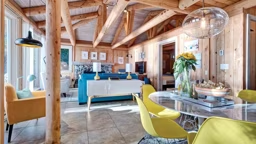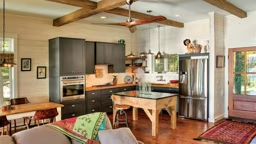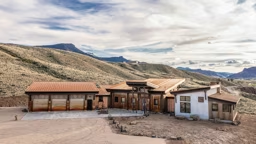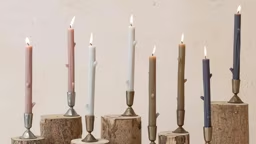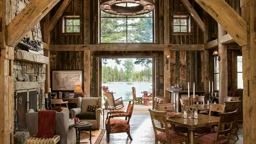A: A tankless system heats water via pressurized water routed through a heat exchanger, opposite in effect – but similar in design – to the cooling heat-exchangers found in radiators and refrigerators. In this case, heat is being transferred from electric coils or gas burners into the water, creating nearly instantaneous hot water.
Q: I’ve heard that tankless water heaters can save you a lot of money. Is this true?
A: Yes and no. Tankless water heaters can reduce energy costs by up to 20%, or $80–$90 a year.
But high up-front costs mean the energy savings will not pay off for a long time; in some cases, about 20 years. Tankless water heaters cost an average of $1,100–$1,200, and additional expenses like electrical wiring, upgrades to gas lines, and the installation of ventilation can mean a fourfold initial investment compared to tank models. Given the intermittent water usage at most seasonal cabins, a tankless water heater probably won’t pay itself off even in 20 years.
Q: So why would I buy a tankless water heater for my cabin?
A: Several reasons make tankless units an attractive choice. Since they work on demand, they do not rely on a finite volume of heated water, so the only way you can run out of hot water is if you run out of electricity or gas. This can be a huge bonus if you have a long line of people waiting to shower up at the cabin. Second, tankless models are compact and require much less space, freeing up valuable cabin square footage. Finally, while they’re initially more expensive, their higher efficiency also means you’re conserving energy.
Q: What if I need hot water for only one location in my cabin, like my kitchen sink?
A: Small tankless water heaters, called “point-of-use water heaters,” can be installed under sinks or in closets. Usually electric, these models can provide hot water anywhere in the cabin without the lag time between hot and cold water that plagues whole-house systems (both tankless and traditional tank heater units). Due to the short run-time from the heater to the faucet/shower, point-of-use heaters also reduce water consumption.
Q: What kind of fuels can I use to run my tankless water heater?
A: There are natural gas, electric, and propane units.
Q: I looked at tankless water heaters at my local hardware store, and there was a big difference in prices between models and manufacturers. Why?
A: Just like cars or house furnaces, you’ll end up paying more for models that provide more power or higher efficiency. The most efficient models will cost you hundreds of dollars more initially but will decrease energy costs. However, be aware that many experts believe the highest efficiency units only make sense if your primary concern is for the environment, not your wallet.
Q: So how do I know how big of a unit I need for my cabin?
A: This depends on two factors: the amount of hot water you need at any one time and the temperature of your incoming water.
The amount of water you need depends on how many hot-water fixtures you think you will have running at one time and the flow rates of those fixtures. Modern low-flow showerheads and faucets average less than half the flow rate compared to models made before 1992, a point in time when water conservation was required in U.S. appliance design.
The easiest way to determine your max flow rate is to run water into a 5-gallon bucket for 1 minute and eyeball the volume. Do this for all hot-water appliances that might run at one time – say two showers and a bathroom faucet – and add all the volumes together.
Q: All right, I did the bucket test, and on a busy day at the cabin, I might need 10 gallons per minute (gpm) of hot water. I like my showers at a steamy 120 degrees. How do I determine the second factor, the incoming water temp?
A: You can run cold water through your house (enough to flush out any warmed water in the pressure tank or pipes) to determine that incoming water temp. Or, if you rely on groundwater as a water source, the aquifer temperature is about the same temp as your annual average temp, which is available online for any geographic location. So, for a relatively cool 50-degree aquifer, you’ll need a 70-degree rise for 10 gpm to get to that steamy 120 degrees. Give this info to your local dealer, and he/she will be able to provide the correctly sized unit.
Q: Okay, I’m going to bite the bullet and go tankless. Can I install this myself?
A: Maybe, if you have good pipefitting, ventilation (for gas/propane units), and electrical skills. Otherwise, it’s probably better to rely on a professional.
Kurt Anderson is a DIY plumber who often finds himself in endless supplies of hot water – especially in the middle of cabin projects.





